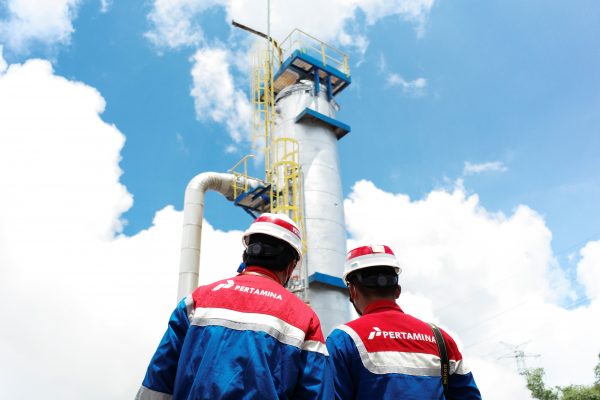The share of renewable energy between 2020–2023 has remained roughly constant. Indonesia’s renewable energy sources are dominated by hydropower, geothermal and biofuels. The utilisation of solar energy through photovoltaic technologies is still limited. Though Indonesia is part of a ‘middle range’ group of countries, along with China, India, the United States and Brazil, which play an important role in terms of installed capacity of global renewable energy production.
The Indonesian government’s efforts to encourage greater use of renewable energy have been demonstrated in Government Regulation Number 79 of 2014 concerning national energy policy. Under this regulation, the government aims for ‘new and renewable energy’ to be at least 23 per cent by 2025 and 31 per cent by 2050 of the primary energy mix.
In Indonesia’s initial Nationally Determined Contribution under the Paris Agreement — the target for reducing emissions in the energy sector in the unconditional and conditional scenarios — is 11 per cent and 14 per cent respectively. The government then revised the targets to 12.5 per cent and 15.5 per cent under Indonesia’s Enhanced Nationally Determined Contribution document.
Though it is an open question whether the proposed ‘new and renewable’ energy law, which is still being discussed, can elevate the role of renewable energy in Indonesia.
In December 2019, a draft law on ‘new and renewable energy’, initiated by the People’s Representative Council (Indonesian parliament’s lower house), was included in the list of regulations to be discussed by the government. The regulatory settlement process is long and has been going on for more than three years.
It is not yet clear when this regulation will be enacted as several articles of the law still need to be discussed among the relevant ministries, stakeholders and the council.
There are two main civil organisations that have important roles in the discussion of the bill — the Indonesian Renewable Energy Society and the Indonesian Electricity Society. The Indonesian Renewable Energy Society says unattractive renewable energy pricing policies, the lack of a level playing field and bank financing support, and weak technological capabilities constrain renewable energy development.
The Indonesian Renewable Energy Society wants this regulation to focus on renewable energy and remove the term ‘new energy’. This is because new energy is not recognised globally. The Indonesian Renewable Energy Society is concerned that the term ‘new energy’ will instead become a loophole for the re-entry of fossil energy in other forms.
But the Indonesian Electricity Society does not seem to mind the term. ‘New energy’ covers nuclear, hydrogen, marine, coal methane gas, liquefied coal, gasified coal, fuel cells, cogeneration, energy storage and carbon and non-carbon emissions from new innovations and technologies.
On pricing policy, both the Indonesian Renewable Energy Society and the Indonesian Electricity Society agree that it is important to consider investment costs and a reasonable rate of return for business entities. The government needs to provide renewable energy subsidies and incentives so that renewable energy is competitively priced. Also, the Indonesian Renewable Energy Society and the Indonesian Electricity Society propose that the government needs to form a renewable energy management or implementing agency to oversee the implementation of the bill.
The government has stated that the bill will cover the 12 sections that will be regulated. But broad coverage of the bill will have an impact on the derivative regulations that need to be prepared, synchronisation with related regulations as well as the potential for the bill to lose focus.
The law needs to act as a bridge from non-renewable to renewable energy so that Indonesia can move ahead quickly with a green energy transition. The law provides incentives for investment and a price subsidy mechanism that can create greater demand for renewable energy.
But the challenge is making renewable energy accessible to consumers who have a high preference for buying renewable energy through renewable energy certificates and other potential consumers who have not yet been attracted. Supporting the availability of infrastructure such as smart grids and smart meters is important for creating demand.
From the supply side, it is yet not clear whether a new body will be formed to manage the law. But the law needs to reduce sunk costs and transaction costs in working with renewable energy and conduct broad-based subsidy reform on fossil fuel, to encourage consumption and production of renewable energy.
Getting the vision, institutions and incentives right will enable Indonesia to accelerate its energy transition.
Maxensius Sambodo is Senior Researcher at the National Research and Innovation Agency and Lecturer at the Universitas Nasional.

